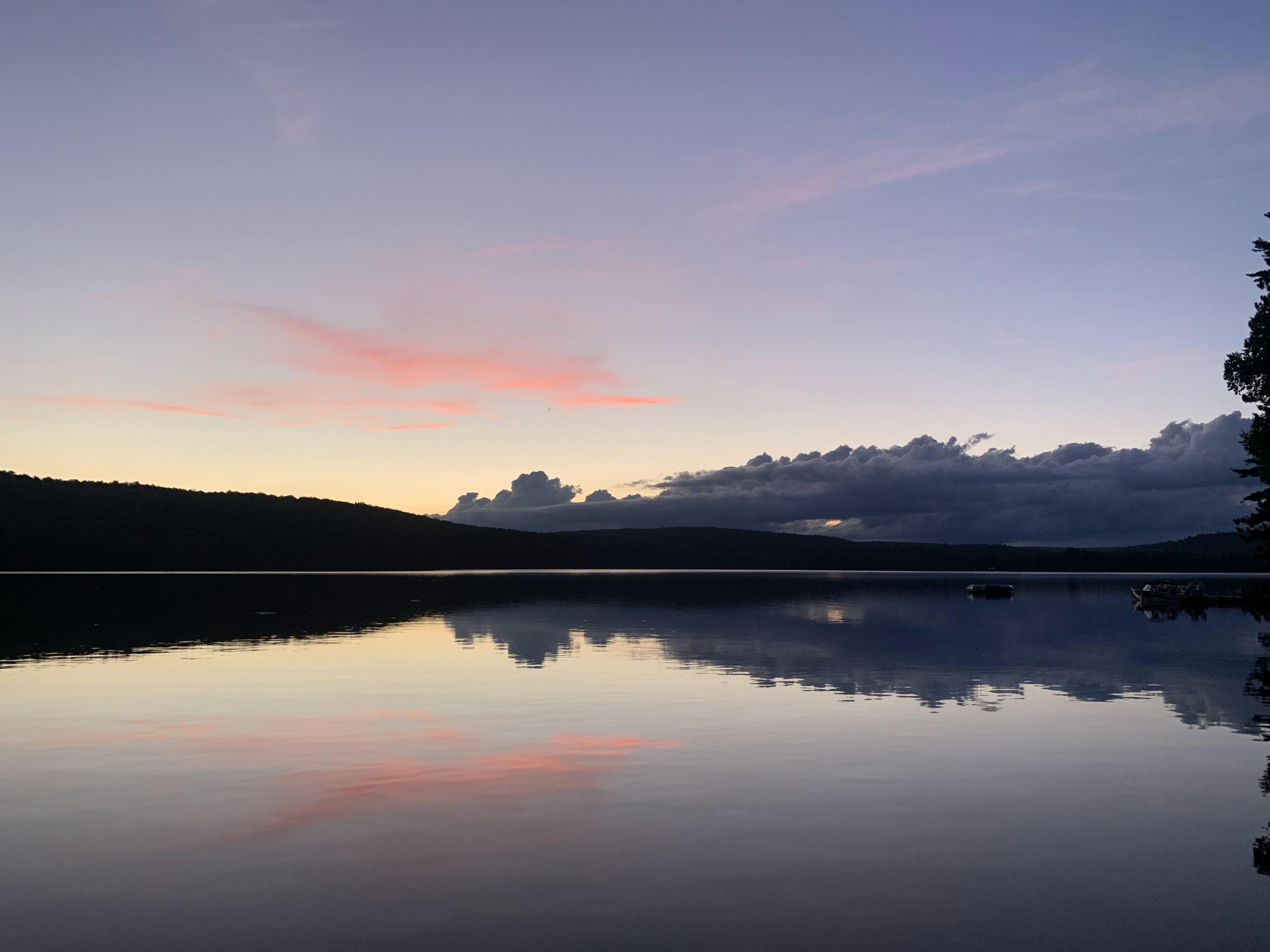
The Township of Algonquin Highlands, in its Official Plan updated in 2010, has designated Livingstone Lake as highly sensitive to further shoreline development and at development capacity in terms of its water quality as it impacts lake trout.
Livingstone Lake Description
Livingstone Lake is a relatively small body of water located about 24 km northeast of the village of Dorset in what was formerly Livingstone Township but is now part of the Township of Algonquin Highlands in the County of Haliburton. It is located at 45° 25’ 30”N in latitude and 78° 43’ 30”W in longitude. Access to the lake is available from an all-season road, Haliburton County Road 12.
There are currently 38 properties (four of them are undeveloped) abutting the shore of the lake as shown on the zoning map on page 5. Three of the property owners are full-time residents, while the rest are seasonal occupants.
Livingstone Lake is part of the South Branch Muskoka River sub-watershed, with headwaters further north in Troutspawn/ Wolf Lakes which flow into Livingstone via Livingstone Creek. At the south end, Livingstone Lake in turn drains into Bear Lake/Kawagama/Lake of Bays via a short creek which drops about 23 metres over approximately 91 metres in length.
Approximately 2.1 by 4.1 km in size with a surface area of about 197 hectares, Livingstone Lake has two basins, one in the back bay and a larger, deeper basin near the middle of the main lake. The first is 20 metres deep and the larger is more than 40 metres deep. The lake has a shoreline circumference of 8.7 km. At least 50% of the lakeshore is wetlands or forested Crown land.
The lake rests on metamorphic rocks of the Grenville Province of the PreCambrian Shield. Rock dating in the general region shows these rocks to be at least 1.42 to 1.47 billion years in age. The largest rock exposure consists of a 50 m high cliff located on the eastern shore of the lake (see photos on home page). The area has been glaciated and glacial striae are visible on many outcrop surfaces. Block faulting has uplifted various areas to give us the present day topography. Several glacial erratics (large boulders) can also be found around the lake. The sand and gravel in the area was likely deposited on the shores of an ancient glacial lake during the last receding ice-age.
The Township of Algonquin Highlands, in its Official Plan updated in 2010, has designated Livingstone Lake as highly sensitive to further shoreline development and at development capacity in terms of its water quality as it impacts lake trout.
A lake is determined to be at capacity through its phosphorus and/or dissolved oxygen content. If additional development would bring the phosphorus readings on a lake
to above 50% of the background or undeveloped concentration of total phosphorus, it is determined by the Ontario Ministry of Natural Resources and Forestry to be at capacity for its impact on lake trout. Also, if the dissolved oxygen readings of a lake are at, or lower than
7 ppm, it is determined by the MNRF to be at capacity for its impact on lake trout. If either
of these readings occurs, then no new development can take place. Development of existing, approved lots can take place but no new lots can be created. Livingstone Lake’s dissolved oxygen content, according to the Ontario Ministry of the Environment, is generally at
7 ppm. With that information, the Township has designated Livingstone Lake as at capacity for development.
Our Vision Statement
Livingstone Lake is a small lake community with plentiful Crown lands and pristine water quality with a rare, self-sustaining lake trout population along with abundant other aquatic and wildlife species. It remains a quiet haven where present and future generations enjoy peace and tranquility, natural beauty and safe recreational activities while respecting each other and the environment.
Our Principles
Protect Lake Character
We understand the need to protect, enhance and rehabilitate the natural, social, physical and historical character of
the lake.
Raise Awareness and Communicate
We will emphasize a combination of raising awareness, communicating and
voluntary compliance over legislative and regulatory constraints.
Adaptive Approach
We will base our actions on current science and knowledge, and will adapt to new circumstances as they arise.
